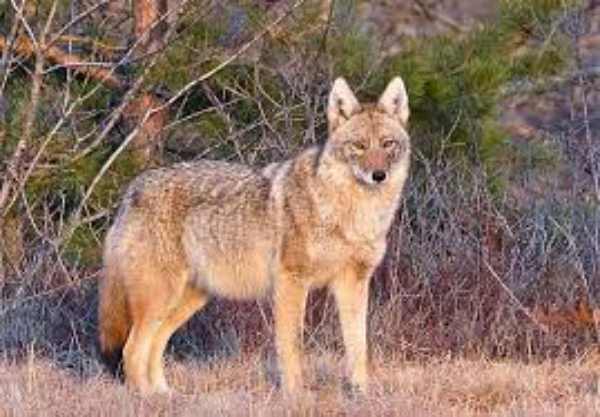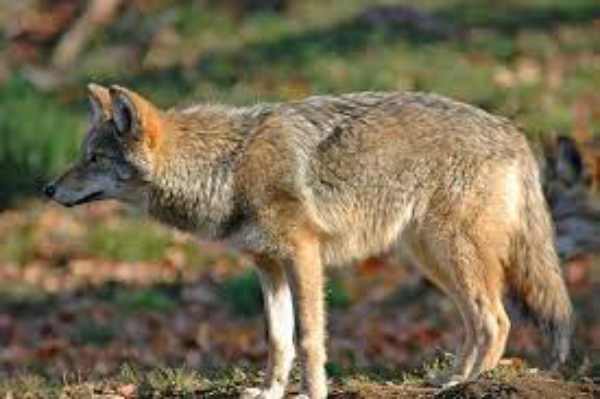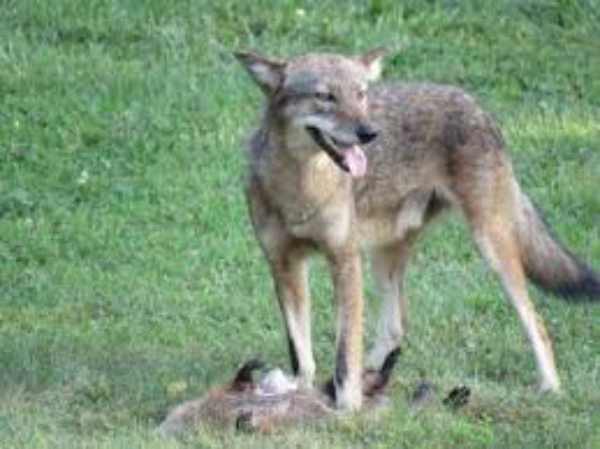The coyote is an iconic figure in the wilds of New Jersey. Its sly and resourceful nature has allowed it to adapt to modern environments with ease, and it has become a common sight among the wetlands, forests, and fields throughout the state. Over the past several decades, their population in New Jersey has grown significantly and they continue to play a vital role in our local ecosystems. While coyotes can sometimes be seen roaming around suburban areas, usually more out of curiosity than anything else, they tend to give people a wide berth if left alone.

Table of Contents
Habitat
Coyotes are a common sight in New Jersey, particularly in the central and southern parts of the state where they inhabit rural and suburban areas. They tend to reside on the edges of developed regions, close enough to access people-oriented resources like food but far away from humans themselves. Coyotes in New Jersey often establish dens in hollowed-out logs or infrequently used buildings and use surrounding vegetation for cover as they hunt for small prey, fruits, and nuts. Dens generally facilitate breeding but also provide protection from harsh weather conditions, since coyotes are adept at surviving extreme cold and hot temperatures depending on their habitat.
Diet
Coyotes generally consume a very varied diet. They feed on small mammals such as mice and voles, but also enjoy eating fruits like berries and apples, insects, reptiles and ground-dwelling birds. Plant matter such as grass or even corn may also be taken advantage of when the opportunity arises. Deer carrion can be an important food source for these opportunistic animals. The diet of coyotes largely depends on the season and availability of different food sources. As they are nocturnal animals, coyotes are known to scavenge pastures at night as well as hunt during both day and night depending on their needs in order to survive.

Colour
Coyotes in New Jersey typically have a unique mix of reddish-grey and tan fur, with some parts of their body appearing almost black. This colouring helps them to blend into the environment of the wetlands, beaches, and pine-oak forests that characterize most of the state. They are also white on their underside and from head to tail tip just before their hind legs giving an overall buff appearance in certain lighting.
Size, Lifespan and Weight
The average size of these creatures is between four and six feet long, depending on their age and gender. These animals live anywhere from ten to thirteen years but some can reach nearly fourteen years in age. The average weight of an adult coyote is only 30 pounds but this varies again depending on the sex of the animal and which specific breed it belongs to.

Predators
Coyotes have flourished in the wilds of New Jersey for years, playing an important role in controlling rodent populations. But like other animals living in the area, coyotes are not without natural predators. Among these are golden eagles, which are known to prey on coyotes as well as hares, small foxes and ground-nesting birds. Wolves were once at the top of the food chain in New Jersey but they went extinct by the early twentieth century due to hunting and loss of habitat.
Nowadays, aside from golden eagles and other birds coyotes’ biggest threat comes from humans who hunt or shoot them for sport or out of fear. Motorized vehicles such as cars have also been known to cause injuries and death to coyotes.
Reproduction
They reproduce once a year, between January and March. Males typically remain with their family group for the first year, and often even longer, while females will rarely leave once they hit maturity. The average litter size of coyotes is four to six pups, which are born blind, deaf and without fur for about three weeks. During this time period, coyotes rely on vocalizations such as yelping or barking to communicate and ward off predators. By six months old, the pups will begin learning hunting skills from their parents.

Coyotes attacks in New Jersey
Coyotes are usually shy, timid animals, but recent reports of coyote attacks in New Jersey have raised questions about their behaviour. As urban areas gradually encroach on natural habitats, there has been an increase in the frequency and intensity of encounters between humans and wildlife. Coyotes feel stressed when their environment is disrupted and they may become more aggressive as a result.
Coyotes sighting in New Jersey
Coyotes have always been seen in New Jersey, but their sightings have increased significantly in the past few years due to urban expansion and loss of habitat. Reports of more rural residents seeing coyotes in backyards and crossing streets illustrate a remarkable habitation shift as these animals search for food sources in suburban neighbourhoods. While some people perceive them as an aggressive threat, coyotes generally steer clear of humans unless attracted by food.
Hunting Coyotes in New Jersey
Hunting coyotes in New Jersey has long been a beloved pastime, enjoyed by generations of residents who cherish the opportunity to get outdoors and observe nature. For those brave hunters willing to venture out before the sun rises, there is a remarkable experience awaiting them as they attempt to track down their elusive prey. Hunting coyotes requires skill and patience as these wild animals can often be quite difficult to locate.
Along with the thrill of the hunt, getting an ideal shot at their target also takes a great deal of practice and precision. While some hunters look to pursue this unique form of recreation more for sport than anything else, others have found success in pest control management as well as using some harvested game for various foods or other materials throughout the year.
References:
https://njaes.rutgers.edu/e367/
https://www.humanesociety.org/resources/coyote-hazing
https://www.njconservation.org/co-existing-with-wily-coyotes/

Rahul M Suresh
Visiting the Zoo can be an exciting and educational experience for all involved. As a guide, I have the privilege of helping students and visitors alike to appreciate these animals in their natural habitat as well as introducing them to the various aspects of zoo life. I provide detailed information about the individual animals and their habitats, giving visitors an opportunity to understand each one more fully and appreciate them in a more intimate way.









